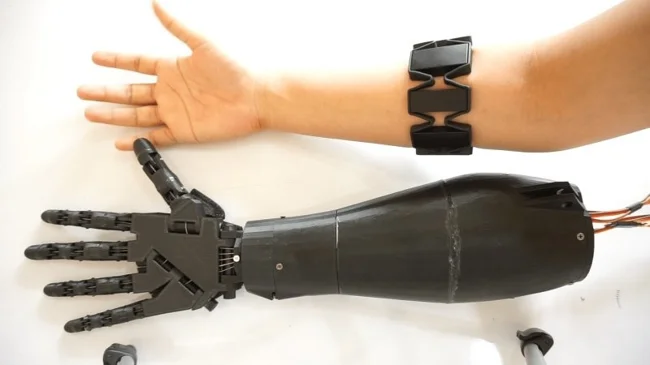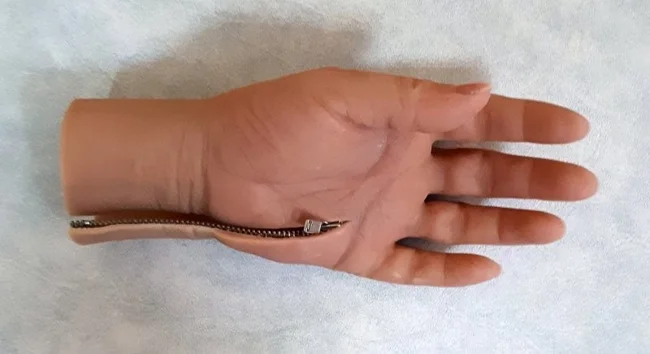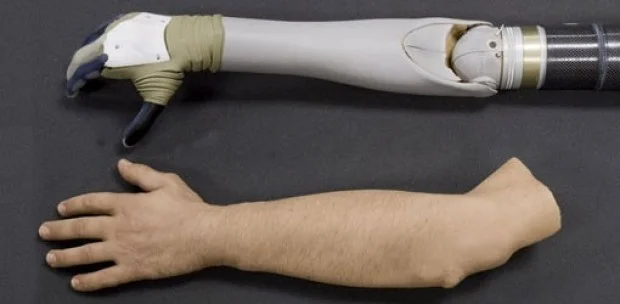Realistic prosthetics: ultra-sensitive electronic skin (4 photos)
If you look at the evolution of prostheses, then from “pirate” hooks people came to robotic prostheses that can be controlled by the power of thought. 
Moreover, scientists do not stand still and strive to ensure that removable limbs are as organic as possible and do not single out a disabled person in society. 
Perhaps the discovery of Scottish specialists from the University of Glasgow will help create realistic prosthetics. They invented an electronic “skin” that covers the prosthesis. This material reacts to changes in temperature, which makes the prosthesis more tactile. To achieve this effect, scientists used the mechanisms of the peripheral nervous system, which reads information and transmits it to the brain. 
True, tactile robotic hands have already been developed; the uniqueness of the Scots’ development lies in the efficiency of reflection on external stimuli. 
If earlier the artificial “skin” of the prosthesis became sensitive thanks to temperature and pressure sensors that sent information to the “brain” of the prosthesis, now synaptic transistors are used. This is precisely what they allow to reduce the delay in reaction to a stimulus.





